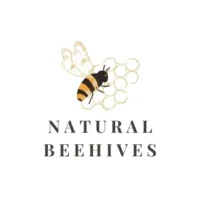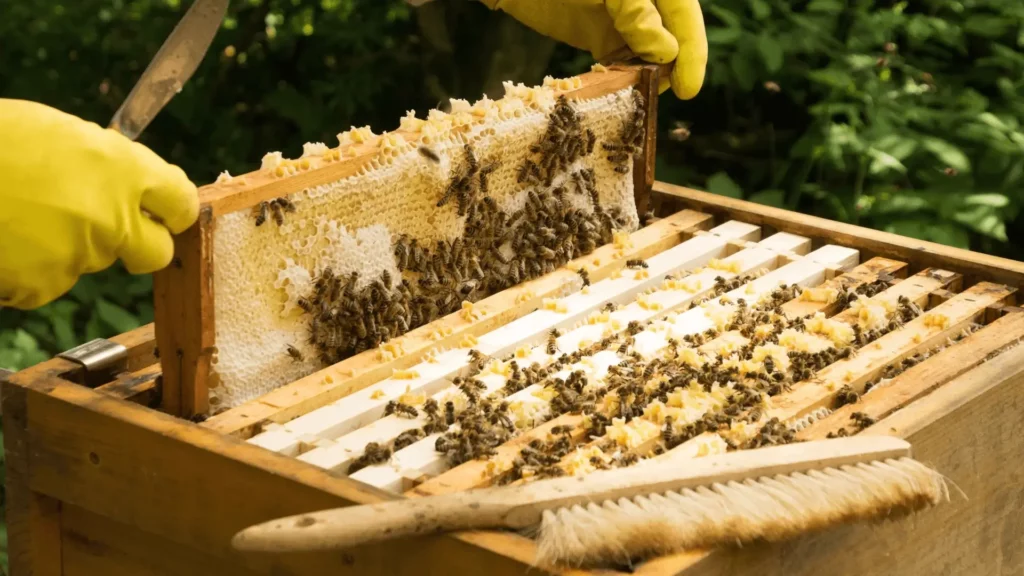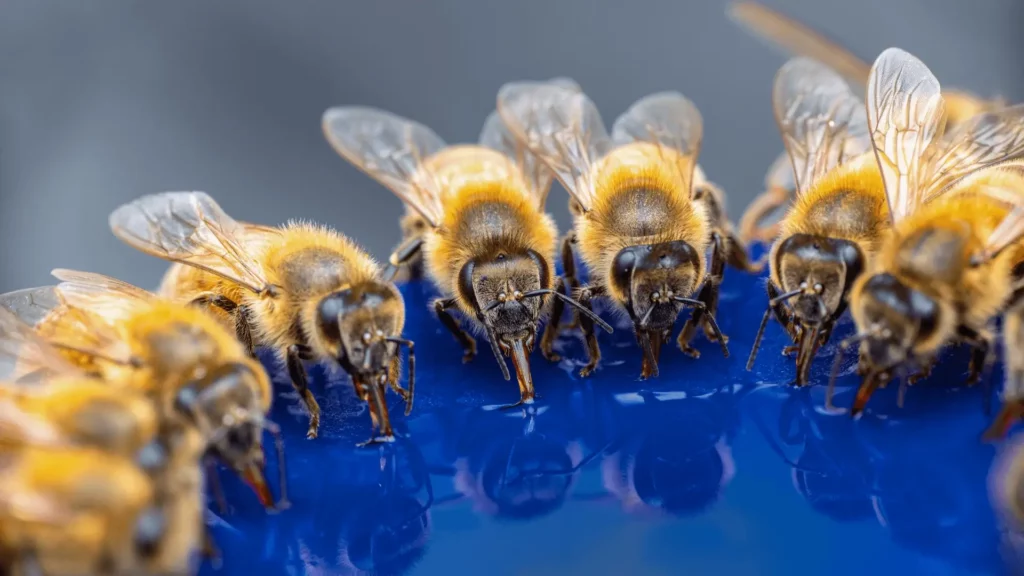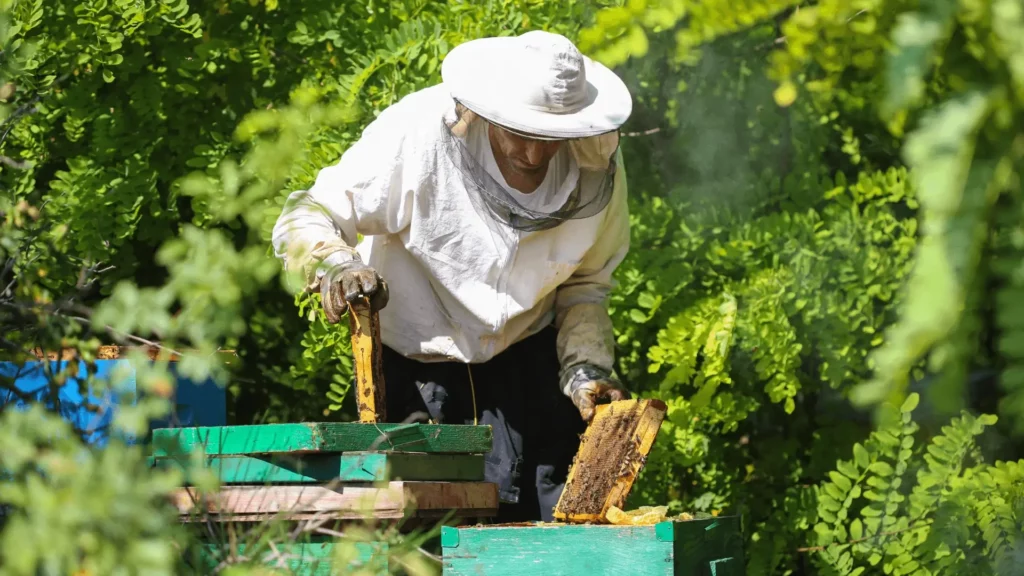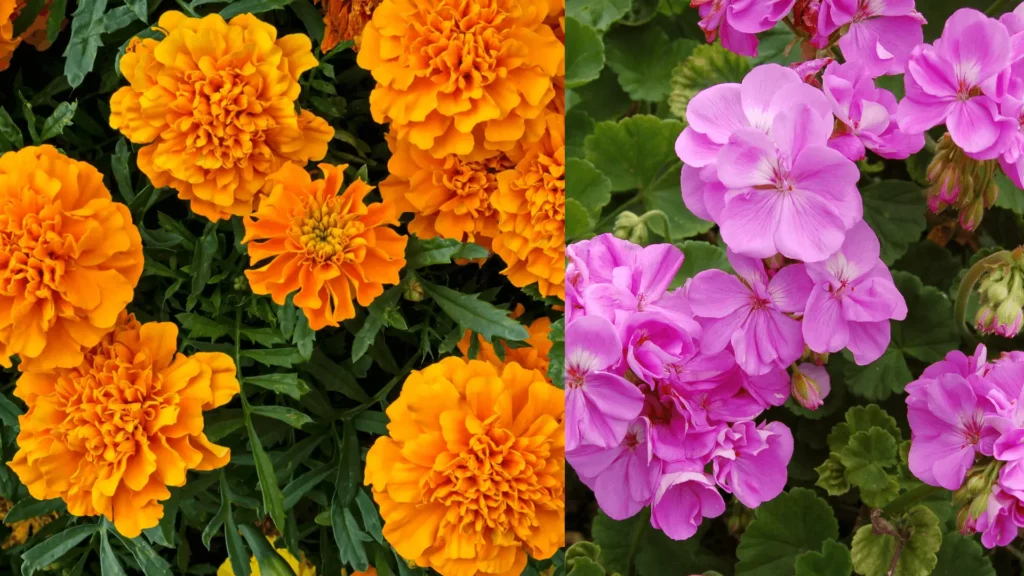
In this article, we’ll explore a list of flowers that bees like the least. These blooms not only repel bees but also create a beautiful and vibrant garden that you can enjoy. From the cardinal flower with its bright red blooms to the white rose that offers little shade for bees to rest on, we’ll cover a variety of options to suit your preferences.
But why should you care about keeping bees away from your garden? Well, for starters, some people have allergies to bee stings and want to avoid any potential encounters. Additionally, if you have a vegetable garden, bees may disrupt the pollination process, affecting your harvest.
So if you’re ready to create a bee-free garden without harming these important pollinators, stick around. We’ll provide you with valuable insights and practical tips on selecting flowers that will keep bees at bay while still maintaining a bee-friendly environment. Get ready to transform your garden into a tranquil oasis with our guide to the flowers that bees like least.
Introduction to Flowers That Don’t Attract Bees
Bees play a crucial role in pollination and maintaining a healthy ecosystem. However, some individuals may prefer to keep bees away from their gardens due to the fear of bee stings or allergies. If you fall into this category, don’t worry! There are several flowers that repel bees and allow you to create a beautiful garden without attracting them.
Flowers that bees like the least possess certain characteristics that make them unattractive to these buzzing insects. Factors such as color, shape, and scent can influence a bee’s preference for a particular flower. By carefully selecting these bee-repellent flowers, you can maintain a bee-free environment while still enjoying the beauty of your garden.
In this section, we will explore 11 surprising examples of flowers that don’t attract bees. From marigolds and geraniums to roses and petunias, these flowers are known for their ability to repel bees. Let’s dive into the world of bee-repellent flowers and discover how you can create a bee-free garden with the right selection of blooms.
The Flowers Bees Like the Least
When it comes to creating a bee-free garden, selecting the right flowers plays a crucial role. By choosing specific varieties that bees tend to avoid, you can maintain a beautiful garden while minimizing the presence of bees. Here are 11 surprising examples of flowers that don’t attract bees:
1. Marigolds: These vibrant flowers with their distinct scent are not favored by bees. Their strong fragrance repels them, making marigolds an excellent choice for a bee-free garden.
2. Geraniums: With their bright colors and variety of hues, geraniums are a popular choice amongst gardeners. Fortunately, bees are not particularly attracted to geraniums, allowing you to enjoy their beauty without worrying about bees buzzing around.
3. Feverfew: While feverfew is known for its medicinal properties and distinctive appearance, it does not appeal to bees. The abundance of beautiful clusters of blooms offers a cheerful addition to your garden while keeping bees at bay.
4. Roses: Contrary to popular belief, not all roses attract bees. White roses, in particular, are less appealing to bees compared to the vibrant colors of most red blooms.
5. Dianthus: Featuring delicate petals in various shades, dianthus is a perfect choice for those who prefer lighter-colored varieties. Bees typically show little interest in these charming flowers.
6. Zinnias: These lively and colorful annual flowering plants are not only eye-catching but also bee-repellent. Their tubular-shaped flowers make it difficult for bees to access nectar, resulting in less bee activity.
7. Mints: While known for their refreshing aroma and culinary uses, mints also have the advantage of not attracting bees. Their strong citrus-like odor is unappealing to bees, keeping them away from your garden.
8. Basil: This fragrant herb is not only a popular companion plant but also a flower variety that bees tend to avoid. The distinct preference of bees for other nectar-rich blooms makes basil an excellent addition to a bee-free garden.
9. Chrysanthemums: With their abundance of daisy-like flowers, chrysanthemums offer a splash of color to any garden. Fortunately, bees seem to have little interest in these cheerful blooms, giving you peace of mind.
10. The Cardinal Flower: This vibrant red flower, despite its enchanting trumpet shape and its popularity among hummingbirds, does not appeal to bees. It is an attractive choice if you want to steer clear of bees while still attracting other pollinators.
11. Petunias: These versatile and easy-to-grow flowers come in various bright colors, making them a favorite among gardeners. Fortunately, bees do not find petunias particularly attractive, allowing you to enjoy their beauty without worrying about bees.
These flowers discourage bees due to factors such as their color, shape, and scent. By incorporating these bee-repellent flowers into your garden, you can create an environment that is both beautiful and bee-free. Remember to carefully choose the flowers that best match your preferences and gardening needs, while also considering their bee-repellent properties.
Benefits of Creating a Bee-Free Garden
Creating a bee-free garden has several advantages, particularly for those who want to reduce the risk of bee stings or individuals with bee allergies. Here are some benefits to consider:
1. Reduced risk of bee stings: By selecting flowers that bees don’t like, you can significantly decrease the chances of bees being attracted to your garden. This can be especially important for people who have allergies to bee stings or those who simply want to enjoy their outdoor space without the worry of getting stung.
2. Peaceful environment: Having a bee-free garden creates a serene and peaceful atmosphere where individuals can relax and enjoy nature without the constant presence of buzzing bees. This can be especially appealing for those who prefer a more tranquil outdoor experience or for families with young children who may be afraid of bees.
3. Alternative pollinators: While bees are crucial for pollination, creating a bee-free garden doesn’t mean you have to sacrifice the pollination needs of your plants. There are other pollinators, such as butterflies and hummingbirds, that can step in and fulfill this role. By providing a variety of flowers that attract these alternative pollinators, you can still support the pollination process in your garden.
4. Increased control over plant placement: Without the constant presence of bees, you have more flexibility in where you can place your plants. You can strategically design and arrange your garden to suit your aesthetic preferences, without the worry of bees clustering around certain flowers.
5. Less maintenance: Bees are attracted to certain flowers for their nectar and pollen, which may require regular maintenance to keep them looking their best. By choosing flowers that bees avoid, you can reduce the amount of time and effort needed for maintenance, allowing you to focus on other aspects of gardening.
Creating a bee-free garden doesn’t mean eliminating bees completely or harming the overall ecosystem. It simply means providing a space where bees are less likely to visit, while still supporting pollination through other alternative pollinators. With careful flower selection, you can enjoy a beautiful and serene garden while minimizing the presence of bees.
Also read: Discover the Benefits of Beekeeping
Tips for Selecting Bee-Repellent Flowers
When it comes to creating a bee-free garden, selecting the right flowers is key. By carefully choosing varieties that don’t attract bees, you can maintain a peaceful environment while still enjoying a beautiful landscape. Here are some helpful tips for selecting bee-repellent flowers:
Consider Color, Shape, and Scent
Bees are naturally attracted to bright colors, especially shades of yellow and blue. If you want to keep them away, opt for flowers in colors they find less appealing, such as white, red, or orange. Additionally, bees are drawn to flowers with tubular shapes, which allow them easy access to nectar. Look for varieties with flat or trumpet-shaped blooms, as they are less likely to attract bees. Lastly, consider the scent of the flowers. Bees are attracted to sweet-smelling blooms, so choosing varieties with a less pleasant odor can help deter them.
Explore Bee-Repellent Varieties
Several flowers have gained a reputation for repelling bees. Marigolds, geraniums, and feverfew are great choices, as bees tend to ignore their blossoms. Roses, dianthus, and zinnias are also less attractive to bees, making them ideal for a bee-repellent garden. Mints, basil, and chrysanthemums are worth considering as well. These varieties not only discourage bees but also offer additional benefits like culinary uses or pest control properties.
Landscaping with Flowers that Repel Bees
Incorporating bee-repellent flowers strategically in your garden can further enhance their effectiveness. Planting them as borders or in areas away from high traffic can help create pockets of bee-free space. Consider interspersing them with other plants to maintain a diverse and attractive landscape. By paying attention to the height, growth rate, and overall aesthetics of these flowers, you can achieve an appealing design while still keeping bees at bay.
By following these tips and selecting bee-repellent flowers based on color, shape, and scent, you can create a beautiful garden that remains free from bees. Remember to strike a balance between repelling bees and providing alternative food sources for them, as supporting bee populations is crucial for the overall ecosystem. With careful flower selection and thoughtful landscaping, you can enjoy a bee-free garden without compromising its visual appeal.
Also read: Exploring Bee Habitats: Where Do Bees Live and How to Support Them
Other Considerations for a Bee-Friendly Garden
Creating a bee-free garden doesn’t mean completely eliminating bees from your outdoor space. Bees play a vital role in pollination and contribute to the overall health of ecosystems. To maintain a balance between creating a bee-free space and supporting bee populations, it’s essential to consider other factors in your garden. Here are some important considerations:
Provide Alternative Food Sources for Bees
Instead of relying solely on your garden for their food, provide bees with alternative sources of nectar and pollen. Planting specific wildflowers, such as lavender, sunflowers, or coneflowers, can attract and feed bees. These wildflowers not only provide nourishment but also create additional habitats for bees.
Create Bee-Friendly Habitats
To ensure the well-being of bee populations, you can create separate bee-friendly habitats away from your main garden area. This could include planting native flowering plants, building bee houses or bee hotels, or leaving a section of your garden specifically for wildflowers. By providing diverse habitats, you encourage a broader range of bee species to thrive, promoting biodiversity in your surroundings.
Strive for Balance
While aiming for a bee-free garden, it’s essential to strike a balance between your preferences and the needs of bees. Consider incorporating a variety of flowers that are less attractive to bees, along with those that still provide essential food sources. This way, you can maintain a visually pleasing garden while supporting bee populations.
Remember, it’s crucial to be mindful of the chemicals and pesticides used in your garden. Opt for organic and bee-friendly alternatives to protect both bees and other pollinators. By considering these factors, you can create a beautiful and bee-friendly garden that’s enjoyable for both you and the bees.
Also read: Natural Beekeeping: Embracing Sustainable Practices
Conclusion
Creating a bee-free garden is possible by carefully selecting flowers that don’t attract bees. By choosing the right plants, individuals can enjoy a beautiful garden while minimizing the presence of bees. Here are the key takeaways from this article:
1. Benefits of a Bee-Free Garden: A bee-free garden reduces the risk of bee stings and provides a peaceful environment, especially for individuals with bee allergies.
2. Flowers That Don’t Attract Bees: Certain flowers, such as marigolds, geraniums, feverfew, roses, dianthus, zinnias, mints, basil, chrysanthemums, cardinal flower, and petunias, have properties that repel bees. These flowers have factors like color, shape, and scent that make them less attractive to bees.
3. Tips for Selecting Bee-Repellent Flowers: When choosing flowers for a bee-free garden, consider color, shape, and scent. Flowers with lighter colors, tubular shapes, or strong scents tend to be less appealing to bees.
4. Other Considerations for a Bee-Friendly Garden: While creating a bee-free space, it’s important to support bee populations by providing alternative food sources. Planting specific wildflowers or creating bee-friendly habitats away from the main garden area can ensure the survival of bees.
By following these tips, gardeners can strike a balance between creating a bee-free garden and supporting the health and well-being of bee populations. Remember, it’s possible to have a beautiful garden without attracting bees by carefully selecting the right flowers.
